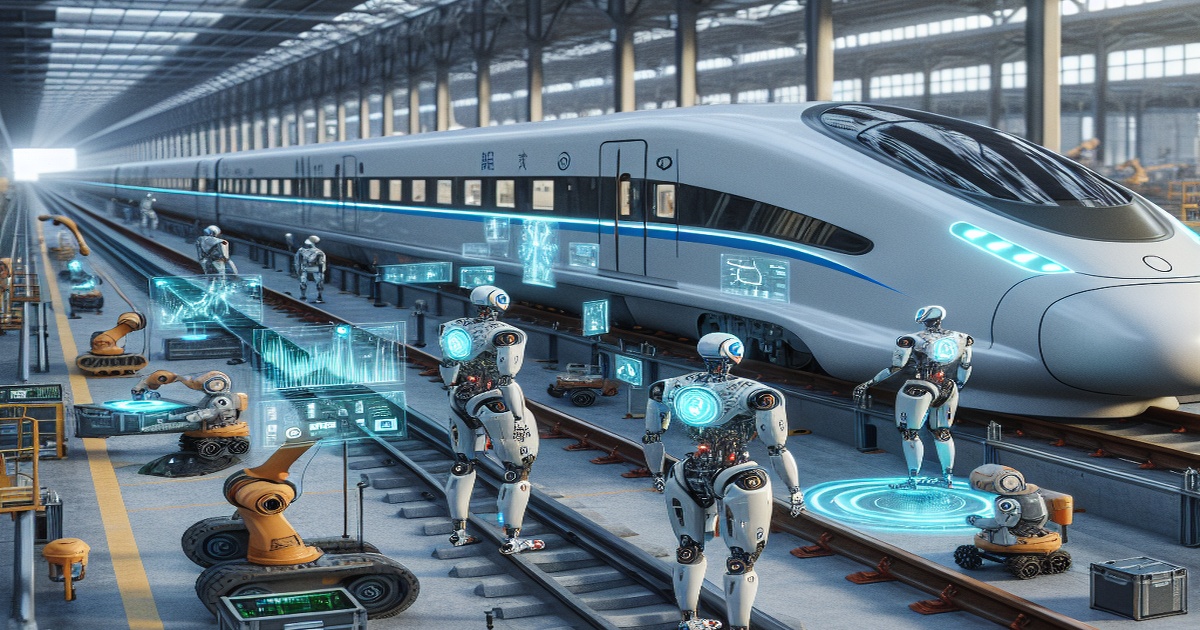In the bustling Nanjing South Railway Station, a pivotal hub in Jiangsu province, a high-speed train arrives just past midnight, and a group of technicians alongside intelligent robots stands prepared to carry out necessary inspection duties. Utilizing cutting-edge laser radar navigation, these robots navigate effortlessly along the tracks, and with their dual articulated arms armed with imaging technology, they thoroughly examine the train's underneath and various components. Their real-time analysis powered by artificial intelligence allows for swift evaluation and follow-up actions.
During the Spring Festival travel rush, which commenced on January 14, China's railway network aims to carry approximately 510 million travelers, necessitating about 14,000 trains in operation each day. To maintain safety during this hectic transit period, each train must be inspected rigorously every three days. The inspections of complex trains present a significant challenge, with an eight-carriage high-speed train requiring assessments of over 10,000 parts, including checks for bolt tightness, oil leaks, and wear of components.
"What previously took a pair of inspectors two and a half hours can now be accomplished in just one hour with the robots. Our staff only spends around ten minutes on a final check, tripling overall efficiency and enhancing our working conditions."
Beyond Jiangsu, intelligent inspection robots are deployed across major cities like Jinan, Beijing, and Shanghai, demonstrating a nationwide effort to leverage high-tech solutions that bolster the safety of the high-speed rail system during peak travel times.
Electricity serves as the primary energy source for high-speed trains, and the Haogang substation in Guangdong province is addressing increased energy needs by employing drones fitted with infrared, ultraviolet, and sonic imaging technology to survey the Guangzhou-Shenzhen-Hong Kong high-speed railway. This advanced approach has shortened maintenance periods from half an hour to just 15 minutes, as noted by employee Tan Chuanbin.
In addition to energy inspection, drones are also utilized for observing and evaluating unstable rock formations and geological risks along railway routes in mountainous regions such as Guizhou and Sichuan. The growth of China's high-speed rail network has been remarkable, with operational kilometers expanding from 8,358 in 2010 to an expected 48,000 by the end of 2024.
According to Duan Wei, the deputy chief in the high-speed rail infrastructure department within Jiangsu's Huai'an section, "The advancements in China's high-speed rail are driven by relentless technological progress." He anticipates further integration of AI and the Internet of Things, which will enhance real-time monitoring and predictive alerts to ensure passenger safety.







6 Comments
Habibi
This emphasis on tech makes it seem like the human touch is becoming obsolete.
ZmeeLove
Human inspectors will still be around for final checks, so I feel safe! Great balance!
Karamba
Is there a backup plan if the robots fail? Relying solely on technology seems risky.
Matzomaster
I'm looking forward to seeing these innovations roll out across other sectors, not just rail!
Rotfront
What an impressive achievement! The speed of inspection is crucial for passenger safety.
Raphael
Drones for energy inspections? That’s a creative and efficient approach! Kudos to the team!